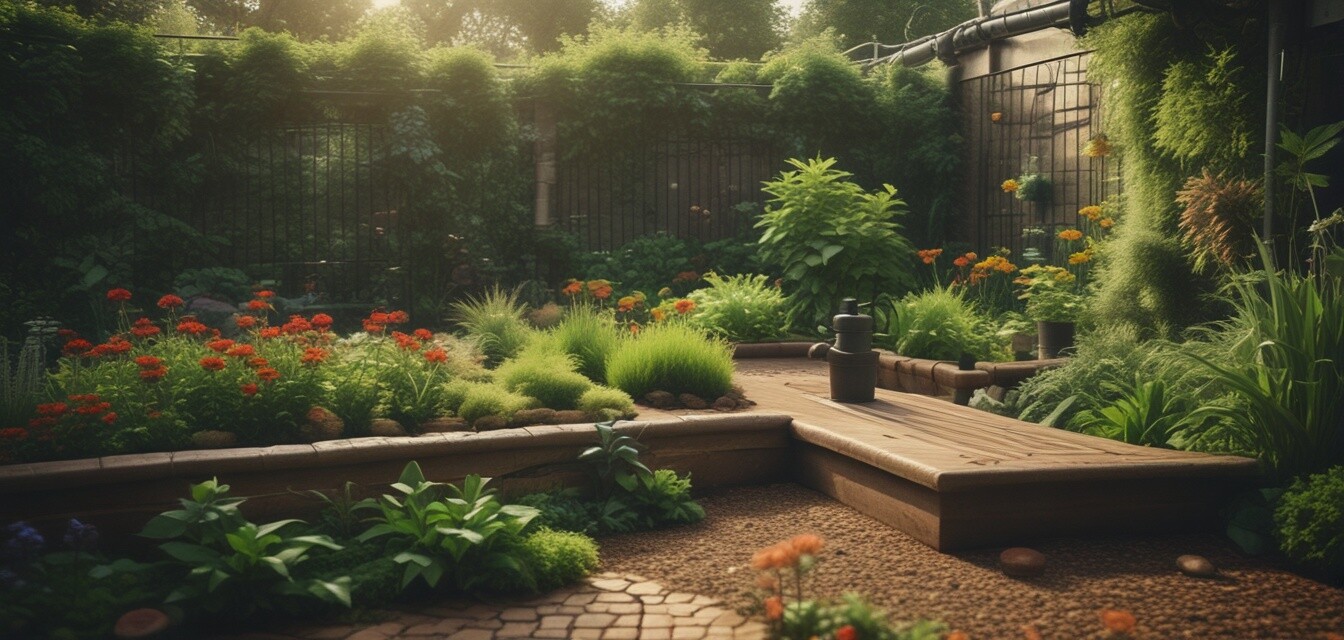
Eco-Friendly Watering Systems for Gardens
Key Takeaways
- Eco-friendly watering systems promote conservation and efficiency.
- Drip irrigation and rainwater harvesting are among the most effective methods.
- Proper maintenance can extend the lifespan of your watering systems.
- Investing in quality materials can enhance the performance of your garden watering.
- Choosing the right watering system depends on garden size and plant types.
As gardeners increasingly strive to create environmentally sustainable spaces, eco-friendly watering systems are becoming vital tools. These systems not only conserve water but also promote the healthy growth of your plants. In this guide, we will explore various eco-friendly watering systems that can transform your gardening experience.
Understanding Eco-Friendly Watering Systems
Eco-friendly watering systems are designed to optimize water use and minimize waste. They use various technologies and practices to ensure plants receive adequate moisture while reducing overall water consumption. Here are the primary types:
- Drip Irrigation
- Rainwater Harvesting
- Soaker Hoses
- Smart Irrigation Systems
1. Drip Irrigation
Drip irrigation delivers water directly to the roots of plants through a network of tubing and emitters. This minimizes evaporation loss and allows for precise control over water delivery.
Pros
- Highly efficient water usage
- Reduces weed growth
- Encourages deep root growth
Cons
- Initial setup can be complex
- Potential for clogging
2. Rainwater Harvesting
Rainwater harvesting involves collecting and storing rainwater for future use in gardens. This method not only conserves potable water but also provides free irrigation during dry spells.
Choosing the Right System for Your Garden
When selecting an eco-friendly watering system, consider the following factors:
| Factor | Considerations |
|---|---|
| Garden Size | Small gardens may benefit from simple soaker hoses, while larger spaces might require drip systems. |
| Plant Types | Diverse plant species may need specific watering methods for optimal growth. |
| Soil Type | Different soils retain water differently; sandy soils may need more frequent watering. |
| Climate | In arid regions, systems that efficiently conserve water are essential. |
Innovative Irrigation Systems
With technological advancements, innovative irrigation systems are now available that automate watering based on weather forecasts and soil moisture levels. These systems are beneficial for busy gardeners looking to maintain a healthy garden with minimal effort.
Maintenance Tips for Eco-Friendly Watering Systems
To ensure the longevity and efficiency of your watering system, it's essential to perform regular maintenance. Here are some helpful tips:
Maintenance Tips
- Regularly check for leaks and drips in your system.
- Clean filters and emitters frequently to avoid clogging.
- Inspect your hoses for wear and tear.
- Adjust watering schedules based on seasonal changes.
Conclusion
Utilizing eco-friendly watering systems is an effective way to enhance your gardening experience while conserving water. By choosing the right system and maintaining it properly, you can ensure your garden flourishes sustainably. For more information on eco-friendly garden solutions, visit our selection of eco-friendly fertilizers and innovative irrigation systems.